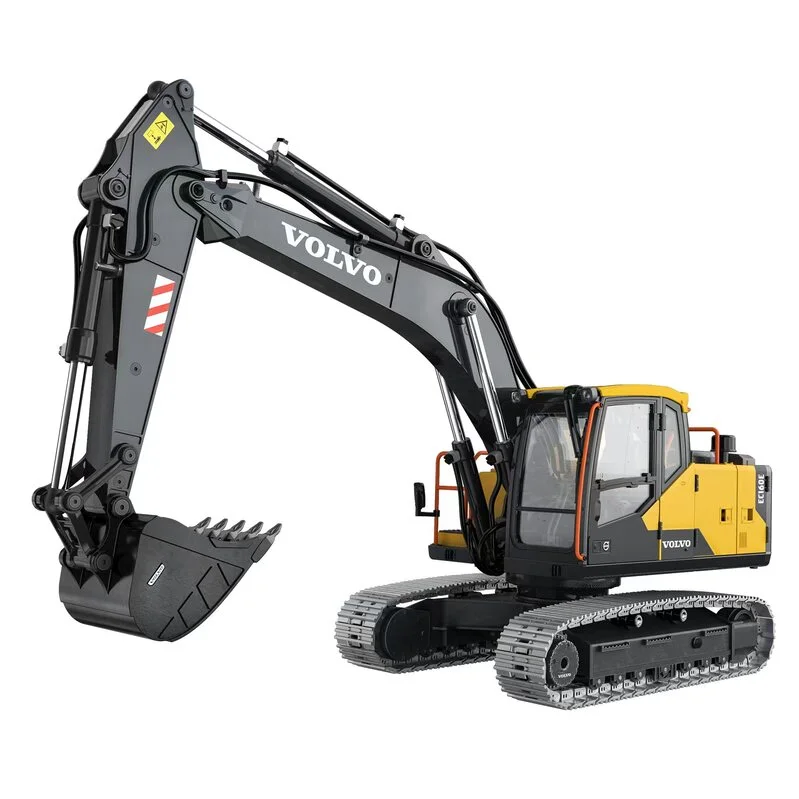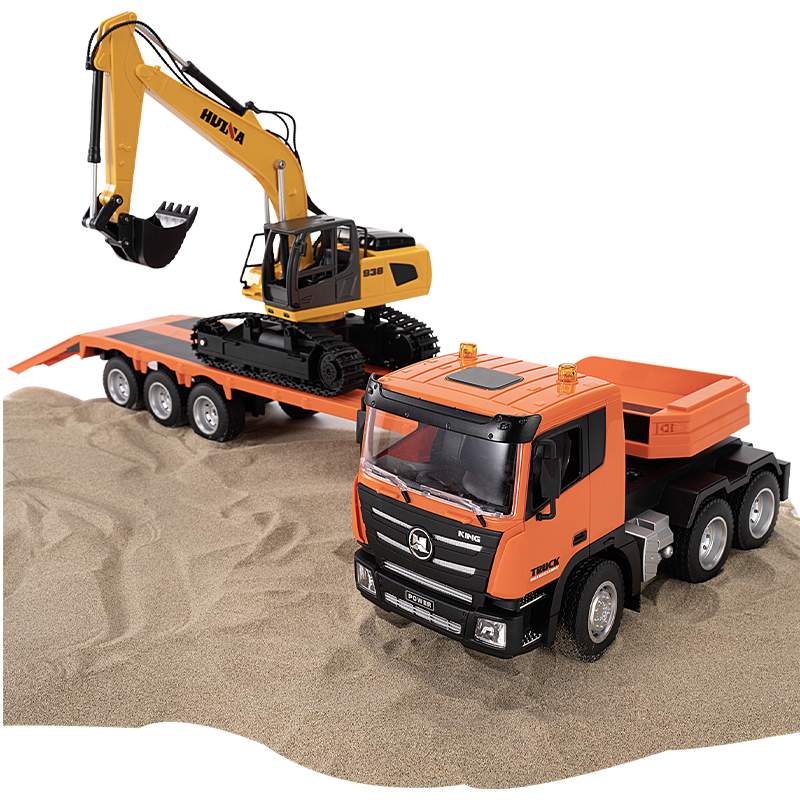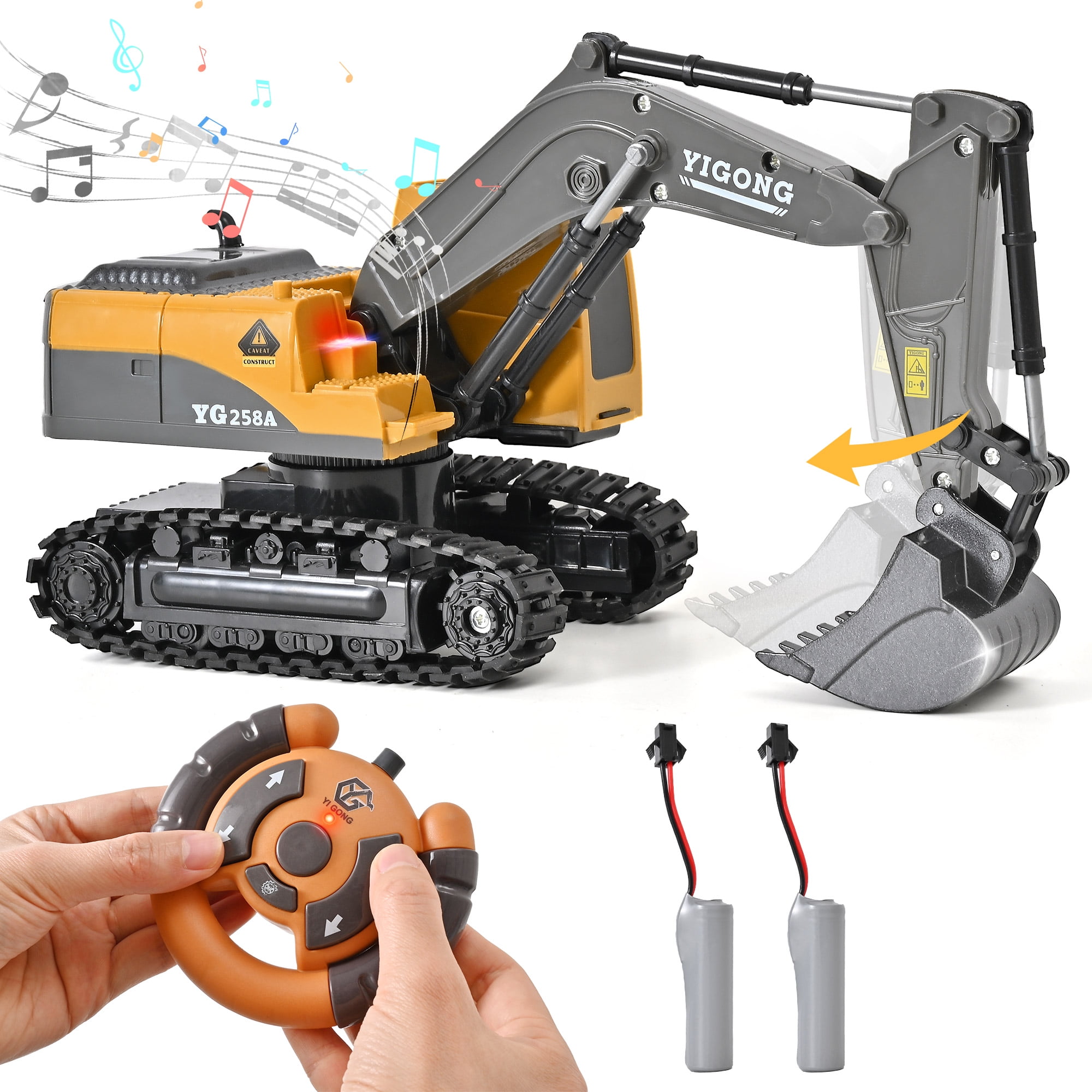The Necessary Features of Excavator That Keep It a Must-Have Device
Excavators are crucial in the building and construction and landscaping markets. Their functional attachments allow for a variety of jobs, from excavating to demolition. Furthermore, they boast exceptional excavating depth and reach, powered by robust engines. Operator comfort and small layouts enhance usability in numerous environments. What truly establishes excavators apart are their innovative hydraulic systems and durability. Understanding these features can make clear why they are thought about necessary tools on any type of work website.
Versatile Accessories for Boosted Capability
Excavators are powerful machines on their own, the addition of flexible accessories greatly enhances their functionality. These add-ons transform a conventional excavator right into a multi-purpose device, appropriate for a range of tasks. Buckets, as an example, come in different forms and sizes, making it possible for drivers to dig, scoop, and relocate materials successfully. Hydraulic thumbs can be included for improved gripping and handling of bulky things, such as logs or rocks.Furthermore, specialized attachments like breakers and augers enable drilling and demolition work, broadening the excavator's utility on building and construction websites. remote control excavator. Grapples are one more alternative, perfect for moving and sorting particles. This versatility not just boosts productivity but also lowers the requirement for multiple machines, saving time and costs. By gearing up excavators with the best add-ons, operators can take on diverse jobs, making them crucial in the construction industry
Superior Excavating Depth and Reach
Excavators are made with superior digging depth and reach, enabling them to navigate in tight rooms and access hard-to-reach locations. This capability is vital for numerous building and construction and excavation tasks, where standard equipment may fall brief. With flexible boom arms and extendable tracks, excavators can conveniently browse irregular terrain while keeping stability.The excavating depth can vary substantially amongst versions, typically ranging from 10 to 25 feet, depending on the design and objective. This attribute allows drivers to excavate structures, trenches, and other deep frameworks efficiently. Furthermore, the reach of an excavator permits accurate digging and product handling without rearranging the machine regularly, conserving time and labor costs.Ultimately, the exceptional digging depth and reach of excavators make them indispensable for experts looking for to finish complicated tasks with precision and efficiency. Their versatility boosts productivity on job websites, showcasing them as a necessary device in modern construction.
Powerful Engine Efficiency

Effective engine efficiency plays an essential role in the abilities of an excavator when it comes to effectiveness and performance on building and construction websites. A durable engine produces considerable horsepower, permitting the device to tackle heavy-duty tasks effortlessly - remote control excavator. This toughness equates into faster cycle times, allowing drivers to complete projects extra quickly.Additionally, powerful engines offer the required torque to manage challenging terrains and varied lots, ensuring that the excavator can do successfully under various problems. Whether it is lifting, excavating, or moving materials, the engine's efficiency directly influences the total operational effectiveness of the machine.Furthermore, developments in engine technology have actually caused improved gas efficiency, reducing functional prices while preserving power result. Ultimately, the engine's performance works as the foundation of an excavator, attesting its condition as a vital tool in the building and construction market
Advanced Hydraulic Systems

Boosted Lifting Capability
A considerable improvement in raising capacity can be credited to advanced hydraulic systems located in modern excavators. These systems utilize high-pressure fluid to produce greater pressure, allowing drivers to lift heavier lots effortlessly. The design behind these hydraulics assurances peak performance, providing an excellent power-to-weight proportion that improves overall performance. Because of this, excavators can tackle demanding tasks, such as raising big materials or equipment, without endangering stability. Additionally, the robust layout of hydraulic components adds to enhanced sturdiness and dependability, making them suitable for different construction settings. This enhanced lifting ability not only minimizes the time needed for jobs however also minimizes the need for additional equipment, showing essential for both productivity and cost-effectiveness in the construction market.
Improved Precision Control
Conventional excavators commonly battled with accuracy, contemporary hydraulic systems have transformed control mechanisms, making it possible for drivers to perform jobs with remarkable accuracy. These innovative systems utilize symmetrical control valves that allow for smoother and extra receptive motions, significantly decreasing the margin for mistake. Operators can currently carefully tune the excavator's movements, making it simpler to browse tight areas and take care of delicate materials. Boosted feedback systems even more inform operators of real-time performance, guaranteeing perfect coordination between the device and operator. This enhanced accuracy not only boosts performance however also improves safety on work sites, lessening the risk of mishaps. As a result, contemporary excavators outfitted with sophisticated hydraulic systems are invaluable tools for building and construction and excavation projects needing precise precision.
Driver Convenience and Exposure
Driver convenience and presence are crucial parts in the design of modern-day excavators (remote control excavator). Functions such as ergonomic seat layout, improved exposure options, and efficient control layouts considerably enhance the driver's experience and productivity. Focusing on these facets guarantees that drivers can function properly and safely in numerous conditions
Ergonomic Seat Design
Comfort and visibility are vital in excavator style, with the ergonomic seat playing a crucial function in improving the operator's experience. An ergonomic seat is engineered to sustain the operator's body, reducing exhaustion throughout long hours of operation. Adjustable features, such as seat elevation, back-rest angle, and back assistance, deal with specific choices and advertise optimal stance. These modifications improve convenience and make it possible for the driver to preserve focus on tasks without discomfort. Additionally, a well-designed seat can supply far better lateral support, permitting smoother handling when the excavator is in operation. This thoughtful style not only increases performance however also adds to overall safety, ensuring that operators can do their tasks effectively and successfully.
Enhanced Exposure Features
The style of an excavator expands beyond simply the seat, with improved visibility functions playing a considerable function in operator convenience and total security. Huge home windows and tactically located mirrors supply operators with a clear view of their environments, decreasing blind spots. This design consideration enables better spatial understanding, which is important in busy workplace. In enhancement, numerous excavators include rearview electronic cameras and advanced surveillance systems that assist operators in steering tight spaces. The assimilation of these presence features not just advertises security however also decreases operator exhaustion by enabling much easier tracking of work locations. Inevitably, boosted exposure adds to more efficient procedures and helps guarantee that excavators can perform their jobs efficiently and securely.
Control Format Efficiency
While maneuvering complicated job websites, an effective control format considerably enhances both driver convenience and exposure. A properly designed control arrangement warranties that drivers can access essential features with very little effort, minimizing tiredness throughout long hours. Ergonomic joystick placements and instinctive switch setups permit smooth procedure, making it possible for operators to keep concentrate on the task handy. Furthermore, clear presence of both the workspace and the control panel is important for safety and accuracy. Modern excavators commonly incorporate adjustable seats and control settings to fit various driver choices, further enhancing comfort. Ultimately, an attentively designed control design not just improves efficiency yet additionally fosters a much safer working atmosphere by allowing drivers to react promptly to changing problems.
Compact Design for Urban Environments
As metropolitan building and construction websites often deal with room restrictions, a portable layout ends up being necessary for excavators running in these environments. These makers are crafted to browse limited spaces, enabling for reliable maneuverability in crowded job websites. A minimized footprint enables them to function carefully to existing structures, minimizing interruption and maximizing productivity.The compact style commonly consists of shorter tracks and a tighter transforming distance, promoting procedure in slim alleys and confined locations. Light-weight products contribute to relieve of transport, making it simpler to move the excavator from one area to another within the metropolitan landscape.Additionally, many small excavators are outfitted with attributes such as flexible add-ons and extendable arms, improving their functionality while keeping a small size. This versatility permits operators to deal with a variety of jobs, from excavating to demolition, all while fitting seamlessly right into the restraints of metropolitan settings.

Resilience and Upkeep Considerations
Resilience stands as a necessary consider the efficiency and longevity of excavators, particularly in requiring urban atmospheres. These makers undergo strenuous conditions, consisting of differing soil kinds, severe temperature levels, why not try this out and high-frequency use. Top notch materials and durable construction More hints are essential for making sure that excavators can hold up against these obstacles without jeopardizing functionality.Regular upkeep is similarly important in maintaining toughness. Scheduled evaluations, prompt oil changes, and the replacement of used elements contribute considerably to an excavator's life-span. Operators has to additionally take note of hydraulic systems, tracks, and undercarriages, as these parts usually birth the burden of wear and tear.Investing in long lasting excavators with extensive maintenance strategies boosts dependability and lessens downtime, eventually leading to enhanced productivity on construction sites. For that reason, understanding the interplay in between durability and upkeep is important for anybody taking into consideration the purchase of an excavator for metropolitan jobs.
Regularly Asked Concerns
How Do Excavators Compare to Various Other Construction Devices?
Excavators stand apart amongst building devices as a result of their convenience, enabling jobs such as grading, digging, and training. Compared to others, their hydraulic abilities use greater effectiveness and power, making them indispensable on various work websites.
What Safety Includes Are Included in Modern Excavators?
Modern excavators integrate different safety attributes, consisting of rollover protection systems, alarm systems, and progressed exposure improvements. These components work with each other to decrease risks, making certain operator security while improving efficiency on building and construction websites and various other requiring environments.

Can Excavators Be Made Use Of in Winter Season Issues?
Excavators can undoubtedly be utilized in winter season problems, provided they are geared up with ideal wintertime add-ons and preventative measures are taken. Proper upkeep and adjustments enhance their efficiency, ensuring reliable procedure in spite of tough weather condition conditions.
What Is the Typical Lifespan of an Excavator?
The ordinary life expectancy of an excavator usually ranges from 7,000 to 10,000 hours of procedure. This period can greatly depend on maintenance techniques, operating problems, and the particular version's sturdiness and layout features.
How Do I Pick the Right Excavator Dimension for My Project?
Picking the right excavator dimension entails assessing job range, site problems, and product types. Think about factors like reach, deepness demands, and weight capability to guarantee maximum efficiency and safety and security during operation. Size issues considerably in project success. Furthermore, the reach of an excavator enables for exact excavating and material handling without repositioning the maker often, conserving time and labor costs.Ultimately, the remarkable excavating depth and reach of excavators make them vital for experts looking for to finish intricate article source jobs with accuracy and effectiveness. Convenience and visibility are critical in excavator layout, with the ergonomic seat playing a vital duty in enhancing the operator's experience. The design of an excavator expands past just the seat, with enhanced exposure attributes playing a substantial function in operator convenience and overall safety. Modern excavators commonly integrate flexible seats and control setups to accommodate different operator preferences, better enhancing convenience. Lightweight products contribute to alleviate of transport, making it less complex to move the excavator from one area to another within the urban landscape.Additionally, lots of small excavators are outfitted with functions such as functional attachments and extendable arms, boosting their capability while preserving a small size.